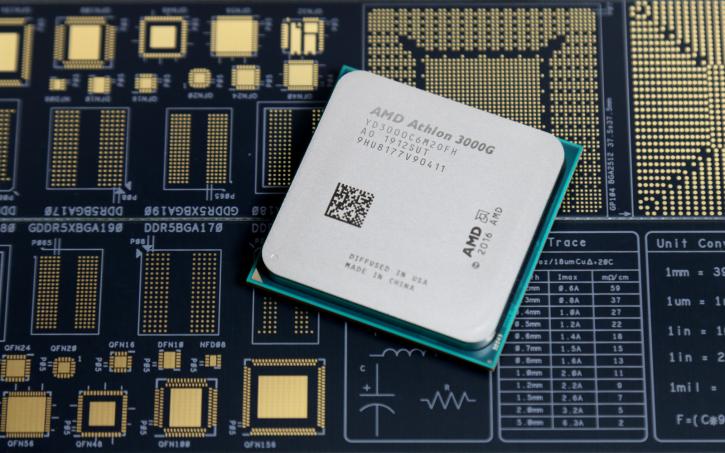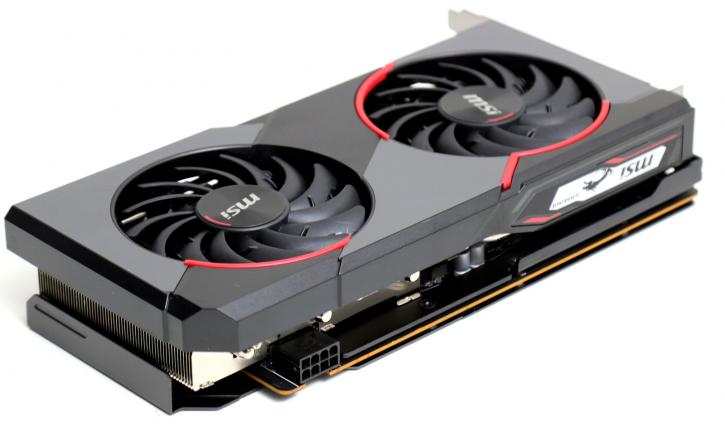The Budget Build
The Budget Build (Without GPU).
This PC focuses on entry-level gaming without a dedicated graphics card. AMD’s APUs are more than capable of providing this in 2021, though – depending on what you are playing – you may see anything between ‘excellent’ and ‘still barely playable’ results. Here, it is best to target 1080p (i.e., Full HD) and then drop the resolution to 900p/720p if required. Note that given the release of the modern consoles, you will have a far better gaming experience at this price point (c. $300-400) if you wish to play equivalent titles on them! If you want to play deep 4X games, though, a PC is really the only way to go.
CPU - AMD Ryzen R3 3200G
(Review) There was only one choice here. The 3200G (based now on AMD’s relatively old ‘Zen +’ architecture, is fully capable of gaming between 720p and 1080p. The processor is also entirely unlocked, leaving you room to overclock the limiting factor (the integrated Vega 8 graphics) as much as you dare. I have seen people hit close to 1,650Mhz on the GPU core, and this can bring substantial performance gains. The processor comes with a stock cooler capable of overclocking the iGPU or the CPU cores. Not both. If you wish to really push the 3200G to see what it is capable of, then I suggest you purchase a $20-30 120mm air cooler and have at it.
Motherboard – AsRock B450M Pro4-F
This remains the same as last time. B550 motherboards are generally too expensive to be justified in a build with as low a budget as this. The board we recommend has a single M.2 slot for fast storage (if you would like to add one later), a reasonably robust VRM, and decent build quality. The onboard audio is not, we will admit, the best, but for the price, you’re paying here… what do you expect?
RAM – 16GB DDR4 3200Mhz
Yep, still 16GB. I genuinely think that it is necessary for 2021. If your budget is really stretched thin, please feel free to go for 8GB system RAM. The decision to go for 16GB is made purely from the standpoint of usability and less from necessity. Most modern games considered ‘AAA’ releases will run (at worst) ‘ok’ on 8GB RAM, though you might experience some stuttering. As for the kit recommended, it comes in cheap at just $68-70, according to PCPartPicker. It is fast (3200Mhz), has reasonably low latency (CAS16), and… well, looks decent. I tend to dislike overly gaudy RAM kits, but that’s my curse!
Storage – 480GB/500GB/512GB SSD
I actually made a slight mistake, I will admit, in the last version of this guide. In 2020, I suggested that people go for a swift but relatively small 256GB M.2 drive. This was certainly an oversight. Here, whilst I still suggest an SSD, I suggest you go for at least 480GB worth of storage. Builders in the US can expect to pay $45-55 for this amount of storage, and whilst you might find M.2 drives in this price category, they are more likely to be using the slower SATA standard. If you are elsewhere in the world where prices are higher, you might either need to accept a slightly higher price or move down to a 256GB drive. Bear in mind, though, that after an install of Windows 10, your useable space on the drive will likely be just 190-200GB.
In terms of what drives actually to recommend, it’s a tricky one. I would advise you to search for an SSD with a DRAM cache, for sure, though that may not be possible at this price point. Low-cost options that don’t have a DRAM cache and perform well enough are the well-known Kingston A400 and SanDisk SSD Plus. Sure, both are now ‘getting on a bit,’ but for 95% of people just using a gaming PC for… well, gaming, they’re absolutely serviceable.
Case & PSU
At this price point, the quality of the case you choose really needn’t matter. Whilst you should try to avoid anything sub $40, anything between $40-50 will probably be ‘ok’ to build in. Certainly not ideal, for sure, but you’re not looking for greatness here. For a PSU, to keep things as cheap as possible, I recommend the relatively new EVGA 450W W3. The PSU is a non-modular 80+ rated 450W unit. Is it great? No. Will it suffice for this PC? Absolutely. It will not be highly taxed by the APU, even if overclocked. Now, I have to point out that whilst this PSU will also handle adding a dedicated graphics card, I would recommend said card be limited to a 150-160W TDP rating.
The Budget Build – Adding a GPU
All that would be needed to turn the above into a capable 1080p gaming system would be adding a dedicated GPU. Whilst lacking in horsepower compared to more modern quad-cores, the 3200G will provide a decent gaming experience when paired with GPUs like a GTX 1650 (Super) or RX 5500XT. Sadly, even the price of these cards has been affected, so adding any of these will see the total build price increase by c. $200-300, so do bear that in mind. Yes, $200 for the 1650. Utterly absurd. Bear in mind that I am going off the US market here. The situation may be different (or even better) where you live.
If you plan to get a dedicated GPU from the start, though, I suggest building the rest of the system to match. The main change would be to start with a modern quad-core hyperthreaded CPU such as the Intel Core i3 10100, or – if you can find it – the AMD Ryzen R3 3100/3300X. The latter two CPUs seem to be commanding a premium due to shortages, though, so realistically speaking, I would shoot for the Intel part here. I would also recommend a slightly stronger PSU from the start. Whilst the above mentioned EVGA W3 is totally capable of powering a card like the 5500XT, going for a 500-550W semi-modular unit with an 80+ Bronze rating would be my suggestion.
Now we move on to our 'mid-range' build



